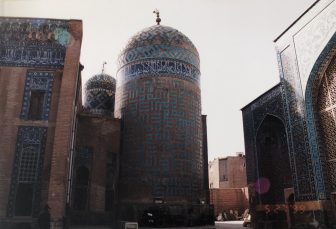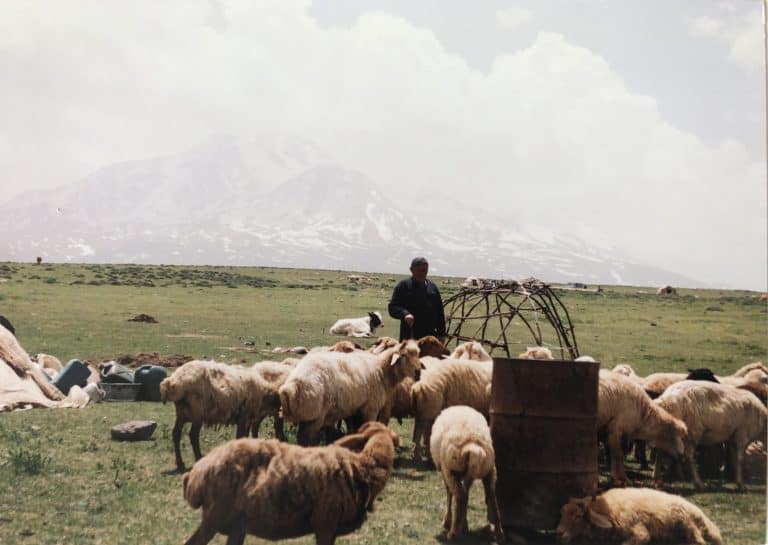
[ May 1999 ] We left Ardabil in Iran and went towards Mount Sabalan whose height is more than 4800 metres.
The highlands at the foot of this mountain was the area where the nomadic Shahasavan people lived.
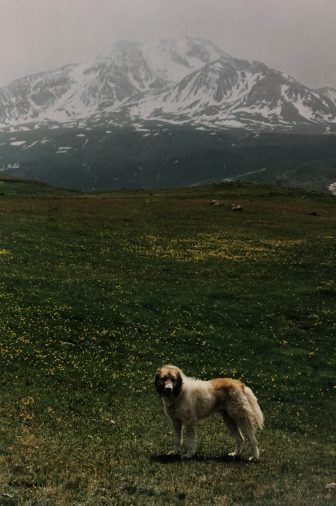
I loved the carpets woven by them and had always wanted to see what sort of people they were.
On the way, we changed our vehicle from the ordinary car which we had been travelling with to a battered jeep driven by a man called Naser.
And we headed for Ghotorsorei, a base for the people who climbed the mountain.
This man, Naser had a nice smile and was a friendly man, though he had a strong smell of the dried sweat.
Soon the magnificent view of the highland spread in front of us, which I had seen in photographs.
And there they were, the Shahsavan people.
As I had seen in photos, they were living in a hemisphere shape tent with sheep, cows and chickens.
We visited one of them.
The middle aged woman approached me with the broad smile and shook my hands, which made me very happy.
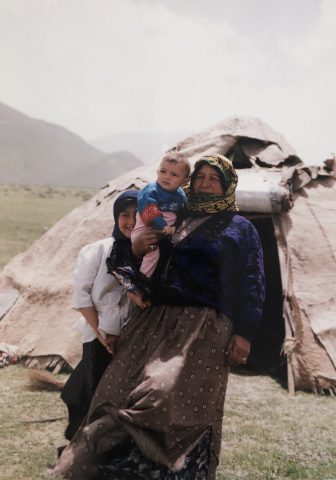
Entering their tent, I found that their three-dimensional textile used as a chest called Mafrash was made of knotted textile rather than the flat woven kilim ( I know it is a bit maniac, but I was interested in this Mafrash the most).
They showed us the newborn calf which was born only one hour before.
Then we moved on and before arriving in Ghotorsoei, we saw the view with this kind of tents scattered around in the green with the background of snowy Mount Sabalan, which was really moving for me.
The Ghotorsoei itself was a shabby town which looked like a abandoned place with discarded warehouses, but they had a cafe and a Kebab shop.
And what I did not know was that this was a hot spring region.
Soon after we got off the jeep, I was asked if I wanted to go for a bath as it was the time for women.
Without hesitation, I started walking towards the bath, which turned out to be something like a swimming pool surrounded by curtains so that people could not peep in.
A few naked women and children were in the water in the pool.
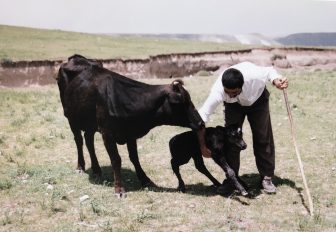
So I started taking off my clothes.
And just at that moment, one of them got out of the water and I found that she was wearing pants.
Because I did not expecting this kind of event, I did not have any spare pants, so I just got into the water with my pants on.
The bathwater was just right.
And of course I was the centre of attention.
One of the women who was young with remarkable breasts came up to me cheerfully and started talking to me.
It was really frustrating that I could not understand their language.
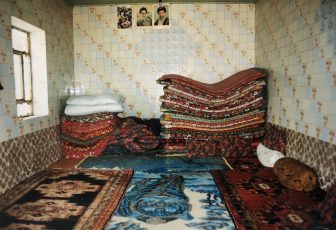
Even so, it seemed that she understood that I was Japanese.
Also, I understood that she had a few daughters and she came to Ghotorsoei just to have a bath and usually lived in a tent.
I could feel that she was proud that she already had a few children.
She had a narrow face and short brown hair.
I had an impression that she could be an unusually outgoing woman within the family.
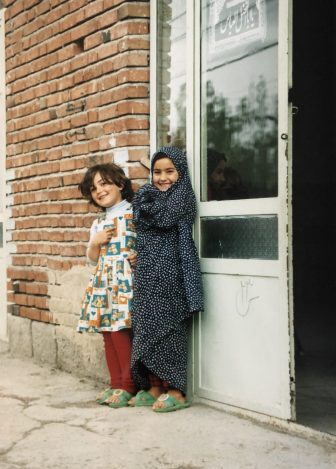
It was a short time, but I was very satisfied that I had a close relationship with Shahsavan people (there is an expression in Japanese, Hadaka no Tsukiai, which literally means the naked relationship, but the real meaning is ‘close relationship’).
Wearing the wet pants was horrible, though.
After the bath, we had lunch at a cafe.
They served a lot of Kebabs, which smelled wild and fresh.
They were in fact not bad with the salty taste.
After lunch, the bath was open for men, so my travelling companion and Ali, the driver went there.
Khalil, our guide was too snob for that, probably worrying to get some disease there.
When I was walking around Ghotorsoei, some friendly children smiled at me and I felt frustrated again because I could only smile back to them.
The weather on the mountain was changeable and because of the occasional gust, the cloud of dust was raised and it rained a bit, too.
Finally when we left the place and parted with Naser, the sweaty jeep driver, after shaking hands, my companion was kissed by him three times on cheeks.


